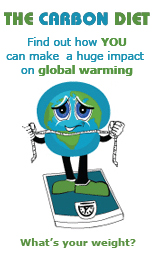Ask Ronit
 I Like Your Ponytail, A Story About Commitment
I Like Your Ponytail, A Story About Commitment
“I like your ponytail.” I said in a playful manner. “Ponytail?” he repeated in a thick French accent. There and then began the most extraordinary odyssey of my life.…
Avoid 90% of the Pesticides in Food, by Avoiding 12 Foods
Why should you care about pesticides in your food?For starters there may be as many as twenty pesticides on a single piece of fruit you eat.…
Dear Mrs. Black,It was January 1967 when this 11 year-old, frightened, little Israeli girl walked into your classroom for the first time. I had only arrived in the country two weeks before.…
With sex all around us, oozing out of our televisions, theaters, magazines, fashion, on the streets, one would think we are the most sexually informed, open and comfortable nation on the planet.”…
I’m sure by now you all have noticed the ongoing meltdown in the mortgage industry. The cause of this whole mess is a little bit complicated, rooted in both the structure of the mortgage industry, and human nature. I’ll try to explain both factors here in layman’s terms.…
Breaking old habits; Creating new Ones
We are mostly habitual beings. Webster defines habit as an acquired mode of behavior that has become nearly or completely involuntary.…
Navigation
Marla Cone
Common Chemicals Are Linked to Breast Cancer
By Marla Cone
More than 200 chemicals including industrial solvents, pesticides, dyes, gasoline and diesel exhaust, cosmetics ingredients, hormones, pharmaceuticals and a chemical in chlorinated drinking water cause breast cancer in animal tests, according to a compilation of scientific reports published today by the American Cancer Society. There is a growing body of evidence linking environmental contaminants to breast cancer, the leading killer of U.S. women in their late 30s to early 50s. Researchers concluded that reducing exposure to the compounds could prevent many women from developing the disease. read more »

 My Hero
My Hero We Are Sexual Beings
We Are Sexual Beings The Banking Implosion
The Banking Implosion









